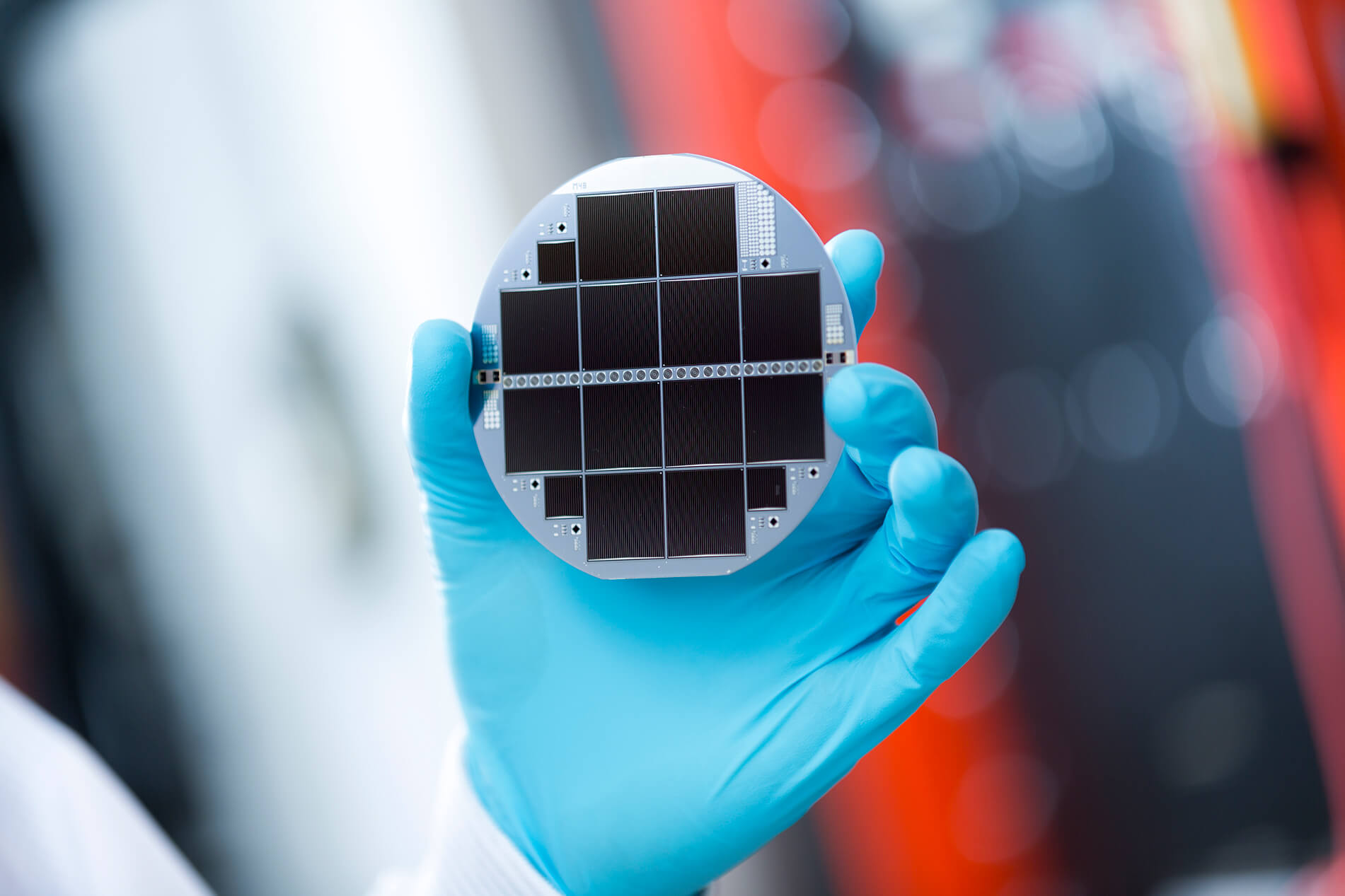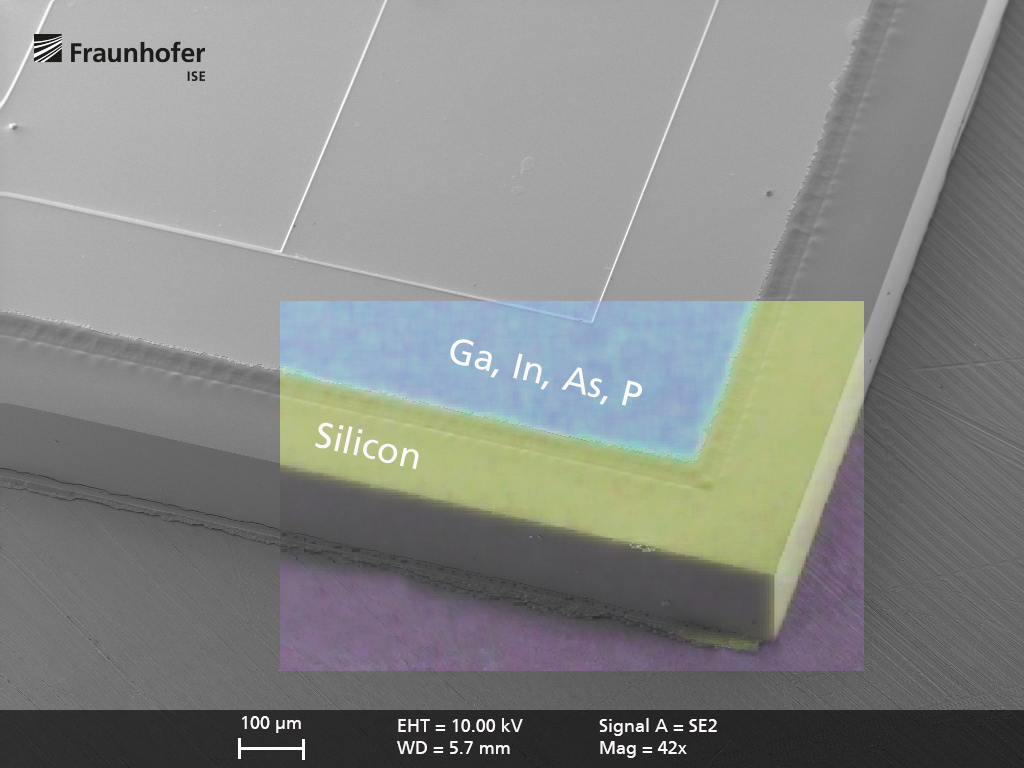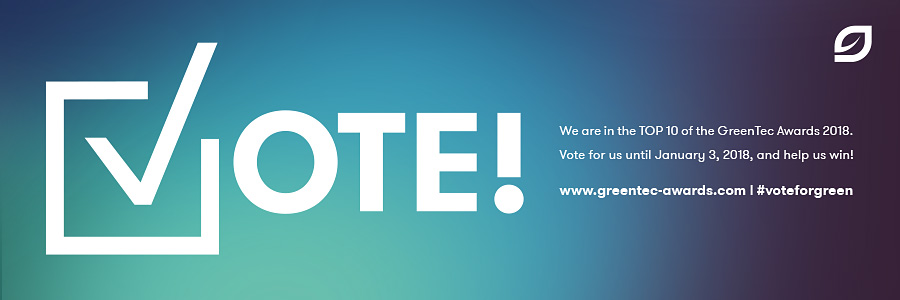Fraunhofer ISE Record Solar Cell Nominated for GreenTec Award 2018
This year the Fraunhofer Institute for Solar Energy Systems ISE premiered a multi-junction solar cell made of III-V and silicon semiconductor materials. The novel solar cell converts a record 31.3 percent of sunlight into electricity. To compare, the best silicon solar cell has an efficiency of 26.7 %. As of today, the project is in the race for the GreenTec Award 2018.


The higher efficiency is made possible with fifteen very thin III-V semiconductor layers with a total thickness 0.002 mm, less than one twentieth the thickness of a human hair. The III-V layers convert the visible part of the sunlight into electricity particularly efficiently. The long wave radiation passes through the III-V layers and is absorbed in the silicon layer. The new cell is based on the silicon solar cell technology which dominates more than 90 % of the solar cell market. The appearance of the two types of cells is hardly distinguishable. At the same time, the efficiency level reached by the new cell is virtually impossible to achieve for pure silicon solar cells.
Photovoltaics is a key technology for the global energy transformation. Higher cell efficiencies allow less material to be used, leading to more sustainable production and reduced area use in the application. The innovative solar cell technology has already been nominated for the Top10 in the category Energy of the GreenTec Awards. Support us and cast your vote online by January 8, 2018 so that our project makes it to the final round!
Since its founding in 2008, the GreenTec Awards have developed into one of the most prominent environmental prizes. In each of the twelve categories ranging from sport to water / waste water, an audience favorite is chosen in an online voting process. Two other finalists are selected from each category by a jury of 75 representatives in finance, science, organizations and media. At the end of February 2018, a jury meeting will be held to select the prize winners in a secret ballot.
The development of the III-V/Si tandem solar cell was funded by the European Union in the projects HISTORIC (655272) and NanoTandem (641023) as well as by the German Federal Ministry for Economic Affairs and Energy in the project PoTaSi (FKz.0324247).
Further Information:
Last modified:
